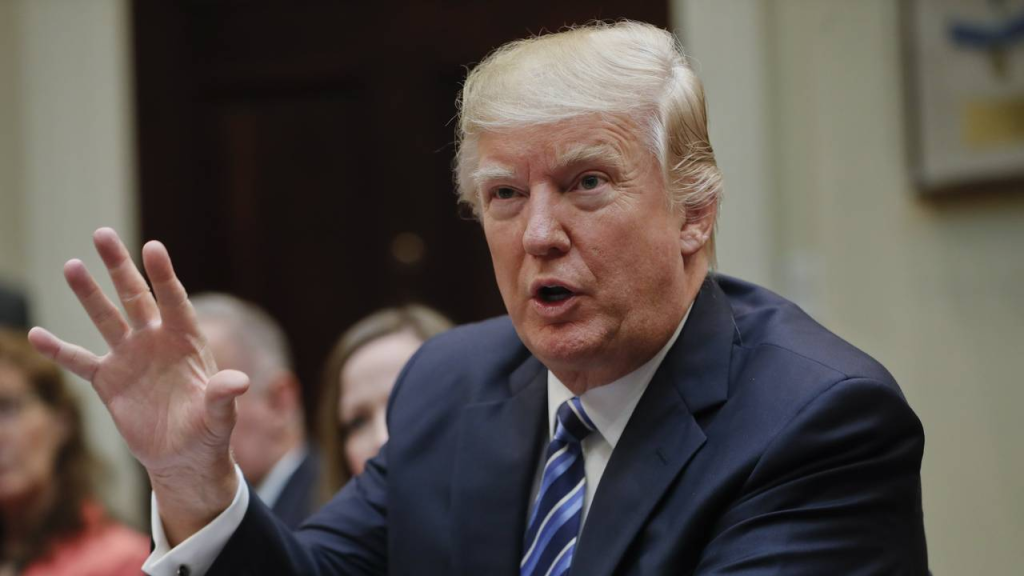
President Donald Trump made headlines early in his administration by declaring a national emergency at the U.S.-Mexico border, granting him the authority to spend billions on border enforcement and wall construction.
Since then, his administration has pushed for even more funding, seeking approval for an additional $175 billion for border security, which greatly surpasses the amount spent during his first term in office.
In the coming months, border towns in Arizona and Texas are expected to see more government grants to fund police patrols, alongside ongoing construction projects for the border wall.
These initiatives are expected to inject money into local economies, as workers flood into these areas, spending money at local businesses, renting spaces in RV parks, and eating out at restaurants. National Guard deployments will also contribute to local economic growth.
However, if you were to ask Sandra Fuentes from the Texas-Mexico border what her community needs most, her answer would be safe drinking water, not more border security.
Similarly, Douglas Mayor Jose Grijalva would say that the priority in his town is a hospital, as his community has gone without one for over a decade.
Despite the billions of state and federal dollars flowing into the border region, many of the majority-Latino communities remain among the poorest in the country.
Unemployment is higher, incomes are lower, and there is limited access to healthcare, poor infrastructure, and low educational attainment. While the federal government focuses on building border walls, towns along the border continue to lack basic resources like running water, paved roads, and hospitals.
In some areas, the lack of access to basic needs is staggering. In Texas, approximately 30,000 border residents lack access to reliable drinking water, and in Arizona, more than 200,000 people living along the border must drive hours to reach the nearest full-service hospital.
Residents of these communities are facing a stark contrast. On one hand, billions are being spent on border security, and on the other, local communities continue to struggle with basic infrastructure needs.
State Rep. Mary González, a Democrat from El Paso County, points out that the focus on border security leaves little room for addressing other essential issues like water and wastewater infrastructure. She emphasized the difficulty of living in an area where turning on a faucet often results in no water.
In Del Rio, Texas, Cierra Flores faces the daily struggle of keeping her water supply from running dry. Living in Escondido Estates, a neighborhood that has gone decades without reliable access to running water, Flores and her family rely on a neighbor’s well to fill a water tank for their household needs.
However, their situation is uncertain, as the neighbor’s property is now for sale. During dry seasons and prolonged droughts, this situation becomes even more pressing, leaving families like hers without water.
Del Rio, located in Val Verde County, is a region nearly three times the size of Rhode Island. Despite the ongoing efforts to bring water to these communities through state and federal grants, about 2,000 people in the county still lack running water.
The struggle to access water is a challenge that many residents face daily, often resorting to showering at fitness centers or washing dishes with water brought from plastic jugs.

Sandra Fuentes, a community organizer, explains that for over three decades, the residents have fought for access to clean water, but state and local politics and a lack of funds have impeded progress.
Despite efforts from the state, the need for water infrastructure remains overwhelming, with the state requiring almost $154 billion by 2050 to address water demand amid ongoing droughts and aging infrastructure.
The issue of water scarcity in the border region is compounded by the fact that much of the federal and state funding goes toward border security rather than addressing these critical infrastructure needs.
State officials, including Governor Greg Abbott, have pledged to invest in water projects, with Abbott’s office announcing plans to dedicate $1 billion annually for the next ten years. However, the disparity between funding for border security and the actual needs of the border communities remains clear.
As residents continue to deal with these water issues, the government continues to prioritize border security, with state grants for border patrols and National Guard deployments regularly overshadowing local needs.
The funds used to build the border wall in areas like Val Verde County are sometimes seen as unnecessary by residents, who argue that basic services like water, healthcare, and housing should take precedence over border security measures.
In Arizona’s border town of Douglas, the absence of a hospital has been a persistent problem for years. The town, with a population of 15,000, had its hospital shut down nearly a decade ago.
With the nearest full-service hospital more than two hours away, residents are forced to make life-or-death decisions about where to seek medical care.
The lack of a hospital in the town has made a bad situation worse, and it remains a priority for Mayor Jose Grijalva, who is fighting for improvements in the community, including more food assistance and healthcare access.
Meanwhile, the state of Arizona has poured money into border security, allocating millions to build a border wall. However, many residents, including Grijalva, believe these funds would be better spent on essential projects like reopening the town’s hospital and fixing the crumbling infrastructure.
Instead, border security continues to dominate state spending, even as the community struggles to provide basic services for its residents.
As border security spending rises, the local needs of residents in border communities continue to be neglected. In places like Del Rio and Douglas, it’s clear that the priorities of the federal and state governments don’t always align with the basic needs of the communities they serve.
